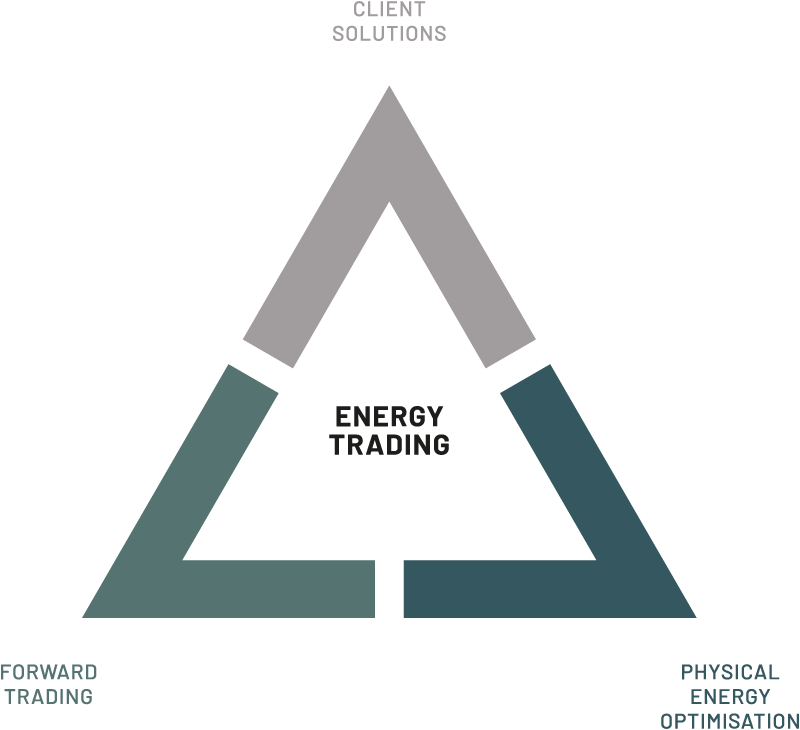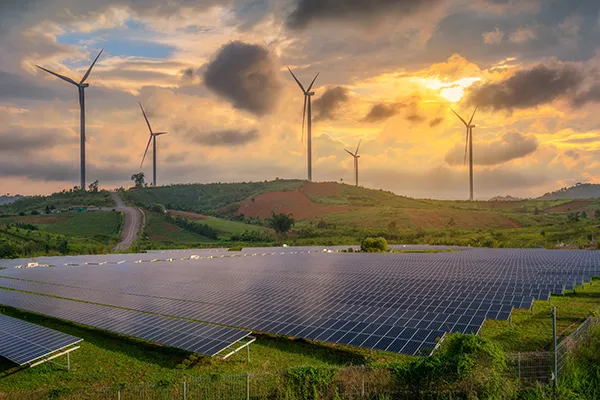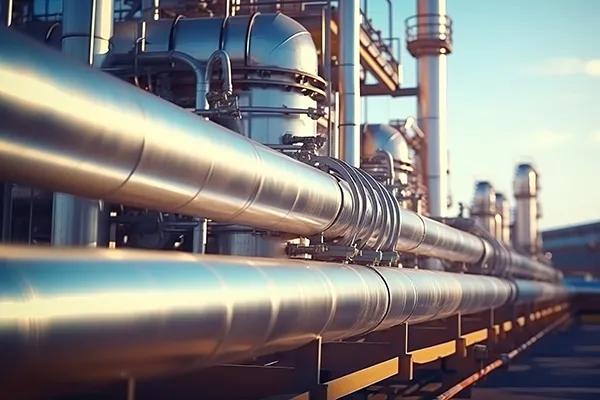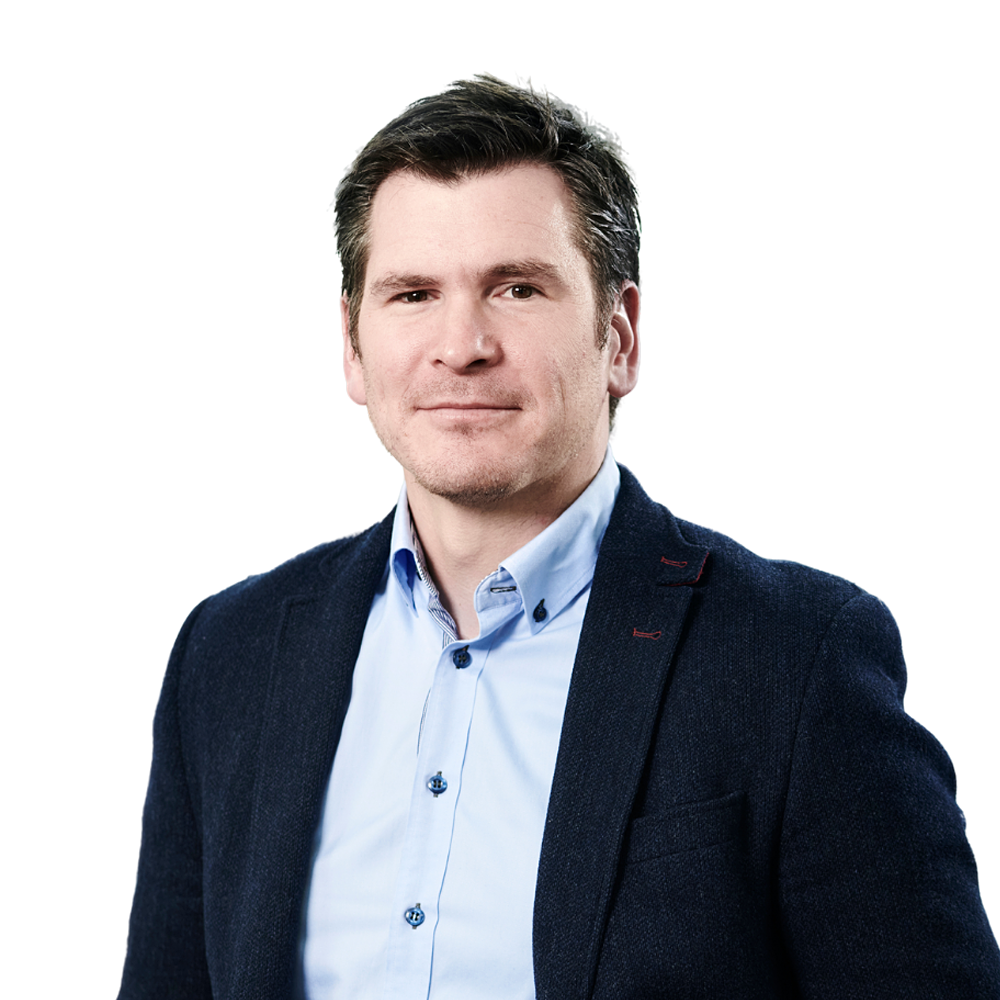
Energy trading
Navigate Risk. Optimise Value. Act with Precision.
Why Trading Matters in the Energy Transition
The European energy system is under pressure
and in transformation. The shift toward electrification,
geopolitical instability, weather-driven volatility,
and accelerating climate ambition have created a new reality: one where energy must be not only renewable, but also reliable, affordable, and immediate.
In this complexity, trading is no longer just a market function. It’s a mechanism for balance. A way to manage risk, stabilise systems, and align supply with demand in real time: across borders, technologies, and timelines.
At Norlys Energy Trading, we see trading as both responsibility and opportunity. It’s not about chasing volatility, it’s about mastering it.
We trade to create clarity in uncertainty. To translate market signals into action. To deliver flexibility and security to those who depend on energy – whether producers, consumers, or grid operators.
Because the energy transition doesn't run on good intentions. It runs on insight, precision, and the ability to act.



Our trading philosophy
At Norlys Energy Trading, we’re organised in a structure that reflects the complexity - three distinct yet intertwined business units working in unison to deliver on our mission.
Client Solutions liaises with clients and unstructured counterparts – we mask the exponential complexity of the energy markets from industry and consumers - onboarding exposure to ensure that producers and consumers are efficiently connected to the market. Client Solutions is where real-world risk meets opportunity — transforming customer needs into strategic market positions. In client solutions we source risk to Norlys Energy Trading. Often this risk is not something that can be found on the trading screen, thus client solutions have a pivotal task in securing the wanted exposure and optimization optionality. This can be exposure in the form of assets that need to be balanced and optimized in the intraday market, and it can be structured exposure that matches appetite in forward trading. Sometimes the clients ask us if we can help them manage risk. If the premium is balanced with the risk or the exposure is a good fit with other exposure, we take it on our books. Sometimes the exposures are traded out in the forward markets, some might be netted out with other clients with a different risk profile, components. At the end of the day, it is all about sourcing and managing exposure.
The strategic core of long-term risk management. This business unit manages long-term exposure across the curve, navigating the shifting web of political instability, weather driven volatility, and market uncertainty. Forward Trading ensures that and some of it will have to be managed towards delivery using a variety of NET remains resilient and adaptive in the face of external shocks — balancing risk while positioning for competitive edge. The teams in forward trading use the full spectrum of contracts to build their strategies and as such they trade futures, forwards, capacities and options all with the aim of securing the exposure we believe is profitable and reduce tail risks for the scenarios we do not like. Again, at the end of the day it is all about ensuring that we have the exposure we believe to be right.
The real-time engine of market efficiency. Intraday Trading and Physical Gas Trading sit at the heart of this business unit — optimizing energy flows inherited from the curve and into balancing and take care of the exposure sourced by Client Solutions. By optimizing physical gas assets, intraday balancing, and storages, this division ensures that Norlys Energy Trading remains agile, responsive, and competitive in real-time markets and that all positions meet the grids and TSOs.
What we trade

Power
From forward and day-ahead to intraday and balancing markets, we ensure physical delivery meets demand – optimising generation, consumption, and system stability.

Gas
We manage physical gas flows, storage, and trading to support both energy security and the transition toward more flexible, renewable systems.

Energy Certificates
We trade Guarantees of Origin, I-RECs, and compliance instruments to deliver verified sustainability value – for both corporates and producers.

Structured products
We structure contracts that match financial goals with energy realities – enabling investment, predictability, and risk management across portfolios.
Trading in action
Markets move fast, and so do we.
Here’s examples of how our trading creates real value, every day:
Meet our people
We thrive on collaboration, innovation, and making an impact, and we’re always looking for people to join us on this mission.
With opportunities to grow, learn, and work on meaningful challenges, you’ll find purpose and passion in everything we do.
Trust is Our Currency
For us, trading is about delivering lasting value – to clients, to the system, and to our team.
Curious? Reach out to our team.










